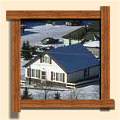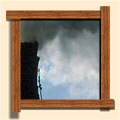 Heritage Community Foundation Presents
Heritage Community Foundation PresentsAlberta Online Encyclopedia
 |
|||
  |
|||
|
Home>> The Industry>> Mines>> Crowsnest Pass>> Coleman Mine |
|||
| Coleman Mine | |||
by Harold Nelson
At the end of World War I, orders for coke dropped and they closed down at the end of 1918 and remained closed until the fall of 1932. During the early depression years of 1930 and 1931 coal orders dropped. As the CPR orders dropped the mines on the Alberta side of the Crowsnest Pass were only working about two days per week. In the early spring of 1932, the miners went on a strike which lasted all summer.
A Herculean task was then encountered to repair and rebuild 104 ovens to take care of this order. With the craftsmanship of such stone masons as Black Joe De Cecco, Primo De Cecco, Frank De Cecco and Joe Sinini and others whose names I have forgotten, the ovens were soon fixed up and in operation. A number of boys were hired at $2.75 a day and they were mostly mason's helpers. They mixed the mortar, cleaned bricks and stone, and cut away the old brick inside the ovens with a hammer and steel. This order gave the mine two extra days' work a week. At this time the mine rate of pay for labor both inside and outside was $4.45 per day.
Once the ovens were in full production, there were about 43
men and boys working there. It was a seven day a week operation,
the men worked three days and one day off, 365 days a year. This article is extracted from Crowsnest and its People: Millennium Edition (Coleman, Alberta, Crowsnest Pass Historical Society, 2000). The Heritage Community Foundation and the Year of the Coal Miner Consortium would like to thank the authors and the Crowsnest Pass Historical Society for permission to reprint this material. |
|||
 |
|||
For more on coal mining in Western Canada, visit Peel’s Prairie Provinces.





